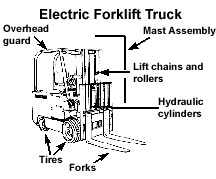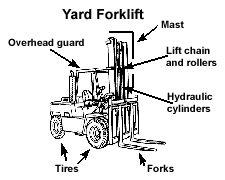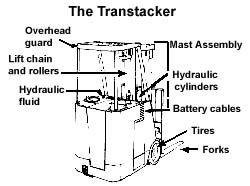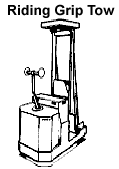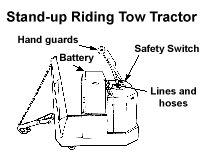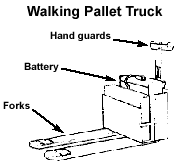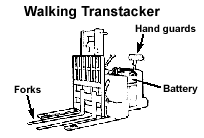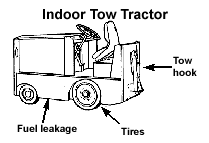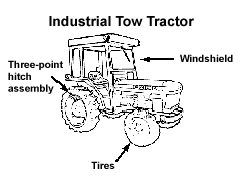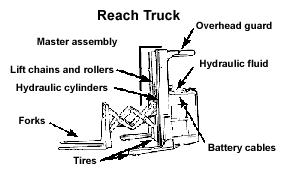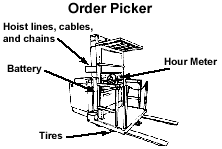Check the hydraulic fluid level
Battery discharge indicator
Test the standard equipment
Front, tail, and brake lights
Safety seat (if equipped)
Check the operation of load-handling attachments
Check the engine oil level
Check the hydraulic fluid level
Check the engine coolant level
Test the front, tail, and brake lights
Oil pressure indicator lamp
Test the standard equipment
Safety seat (if equipped)
Check the operation of load-handling attachments
Check the transmission fluid level
Check the engine oil level
Inspect the hydraulic fluid level
Check the engine coolant level
Test the standard equipment
Front, tail, and brake lights
Oil pressure indicator lamp
Test the standard equipment
Safety seat (if equipped)
Check the operation of load-handling attachments
Check the transmission fluid level
Battery discharge indicator
Test the standard equipment
Check the operation of load-handling attachments
The operations inspection
Check the drive operations
The operations inspection
Check the drive operations
Check the tow hook and safety catch
The operations inspection
Check the drive operations
Inspect the load-handling attachment operations
The operations inspection
Check the drive operations
Inspect the load-handling attachment operations
Overhead guard (if equipped)
Check the engine oil level
Check the engine coolant level
Test the front, tail, and brake lights
Inspect the standard equipment
Safety seat (if equipped)
Check the transmission fluid level
Three-point hitch assembly
Front, tail, and brake lights
Battery discharge indicator
Test the standard equipment
Check the operation of load-handling attachments
Hoist lines, cables, and chains
Check the battery discharge indicator
Test the standard equipment
Are there broken welds, missing bolts, or damaged areas?
Is there leakage or damage on the lift, tilt, and attachment functions of the cylinders?
Are there broken welds, cracked or bent areas, and worn or missing stops?
Is there wear or damage or kinks, signs of rust, or any sign that lubrication is required?
Are they cracked or bent , worn, or mismatched?
Is there excessive oil or water on the forks?
What do the tires look like?
Are there large cuts that go around the circumference of the tire?
Are there large pieces of rubber missing or separated from the rim?
Is there bond separation that may cause slippage?
Are the cell caps and terminal covers in place?
Are the cables missing insulation?
Are they all properly working?
Is there excessive free play?
If power steering, is the pump working?
If pedal goes all the way to the floor when you apply the service brake, that is the first indicator that the brakes are bad. Brakes should work in reverse, also.
Does the parking brake work? The truck should not be capable of movement when the parking brake is engaged.
If equipped with lights, are they working properly?
if the truck is equipped with a safety seat is it working?
Is there hesitation when hoisting or lowering the forks, when using the forward or backward tilt, or the lateral travel on the side shift?
Is there excessive oil on the cylinders?
Is the tank guard bracket properly positioned and locked down?
Is it damaged? It should not be frayed, pinched, kinked, or bound in any way.
Is the connector threaded on squarely and tightly?
If you detect the presence of propane gas odor, turn off the tank valve and report the problem.
Visually check the level. Note: Never remove the radiator cap to check the coolant level when the engine is running or while the engine is hot. Stand to the side and turn your face away. Always use a glove or rag to protect your hand.
(found on stand up riding tow tractors) Is it working?
(found on stand up riding tow tractors, walking pallet trucks, walking trans tackers) Are they in place?
Does the safety catch work properly?
Does the lever operate properly?
(found on order pickers) If the gate is open, does the vehicle run?
(found on order pickers) Do the jaws open and close quickly and smoothly?
(found on order pickers) Does the platform raise and lower smoothly?

